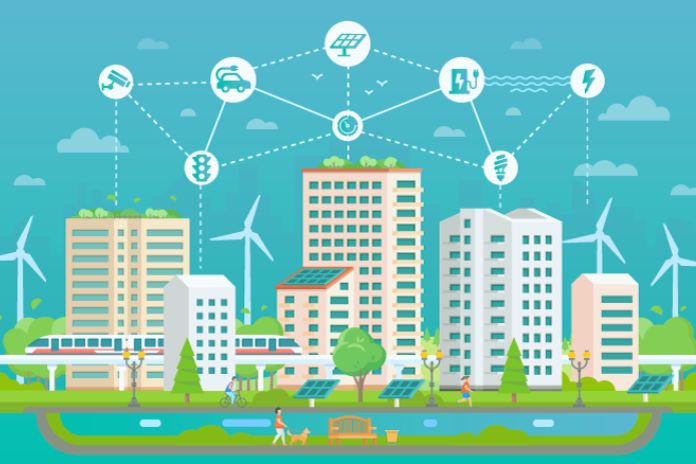How can IoT provide solutions to the difficulties posed by large urban populations? According to the United Nations, rural-to-urban migration and overall global population growth could result in an additional 2.5 billion people living in cities.
With this rapid growth, cities will face unprecedented challenges in terms of traffic congestion, sanitation, crime, and pollution. IoT can solve many of these challenges and enable smart city technologies.
IoT For Smart Cities
One of the challenges of managing large populations is managing resource consumption. Growing people need access to sanitation, transportation, water, and clean air, and all of this should be as convenient, environmentally responsible, and efficient as possible.
Thanks to the IoT, smart cities can meet the growing demands of dense populations without disrupting daily operations. Connected devices can provide data-driven solutions to improve quality of life and solve population and environmental issues such as, e.g. sanitation and air quality.
Components Of A Smart City
Air Management
Air pollution is already a problem and is expected to worsen as the population grows. According to the Proceedings of the National Academy of Sciences, air pollution costs about $900 billion annually. Innovative city technology provides a solution for analyzing air pollution data and forecasting emissions to address potential problems.
For example, a smart city can monitor air quality and switch from hybrid to pure electric vehicles during periods of heavy traffic congestion to ensure balance. The town can also reroute motorists and pedestrians to less congested routes.
Infrastructure
Smart cities are built on smart infrastructure. Smart working infrastructure is optimized for performance and designed to save energy and reduce waste to be green and efficient.
This could be a motion-activated street light that only turns on when residents need it for safety and navigation. When the streets are empty, the lights turn off to save energy.
Park
Parking is already a problem in densely populated cities and will only worsen as the population grows. Smart cities can use sensors to track when drivers arrive and depart to determine when it’s busy and when they are not. These sensors can also alert drivers to free parking spaces nearby, reducing area congestion.
Traffic Management
Traffic congestion contributes to air pollution, reduces the quality of life, and disrupts the flow of city dwellers. Traffic control solutions in smart cities can be optimized to improve traffic flow and address problem areas.
For example, sensors in traffic lights can be programmed to provide real-time updates on traffic patterns and areas of potential congestion. The program can then analyze the site and adjust the traffic lights to keep traffic flowing smoothly.
Waste Management
Waste management becomes increasingly complex and costly as cities grow and expand. Smart cities can improve garbage collection and reduce costs with sensors on garbage cans. These sensors can track garbage collection and send alerts when garbage is complete, allowing waste management to optimize their route.
Video Surveillance
Video surveillance is already widespread in cities and especially in busy areas. Technologies such as Automatic License Plate Recognition and Automatic License Plate Recognition are being deployed along with cameras to address car theft, tolls, crime, and traffic problems.
Surveillance cameras can also be used for more critical purposes in intelligent cities. One potential application is predicting crimes before they happen and identifying people in the area. However, the use of video surveillance is controversial due to the security problems of the IoT.
IoT Architecture Implementation In Smart Cities
All smart cities need a solid foundation to scale efficiently and effectively. If a city wants to extend intelligent technologies to further areas, the existing architecture can be upgraded without a significant overhaul.
An IoT-Based Platform For Smart Cities
Implementing a smart city starts with a basic architecture that includes a network of smart things with sensors for data collection and cloud management, field gateways for data processing and filtering, and data lakes and warehouses for data storage.
Monitoring And Analysis
Data analysis allows the devices to monitor the environment and set up parameters to automate commands depending on the conditions, such as a traffic light that can adapt to real-time traffic scenarios and improve congestion.
Smart Control
Smart control enables applications to send commands to actors to complete tasks based on rules and conditions or machine learning algorithms.
User Applications
User applications enable city residents to connect to the ecosystem and receive alerts or control local IoT devices, e.g., B. Traffic warnings and alternative routes.
Holistic Approach For Smart Cities
Smart cities should be viewed as a whole, not as disjointed IoT devices with point solutions. The entire ecosystem should be refined, updated, and scaled in an ongoing process, e.g., B. Lighting and air management that works in tandem with a more extensive traffic management system to improve air quality, road safety, and driving comfort.
Connectivity And Sustainability For The Future
Although the IoT was still a dream just a few decades ago, today, this disruptive technology is key to building prosperous, futuristic Smart Cities designed for population growth and sustainability.
Also Read: IoT And Analytics: Benefits For Business And Society

